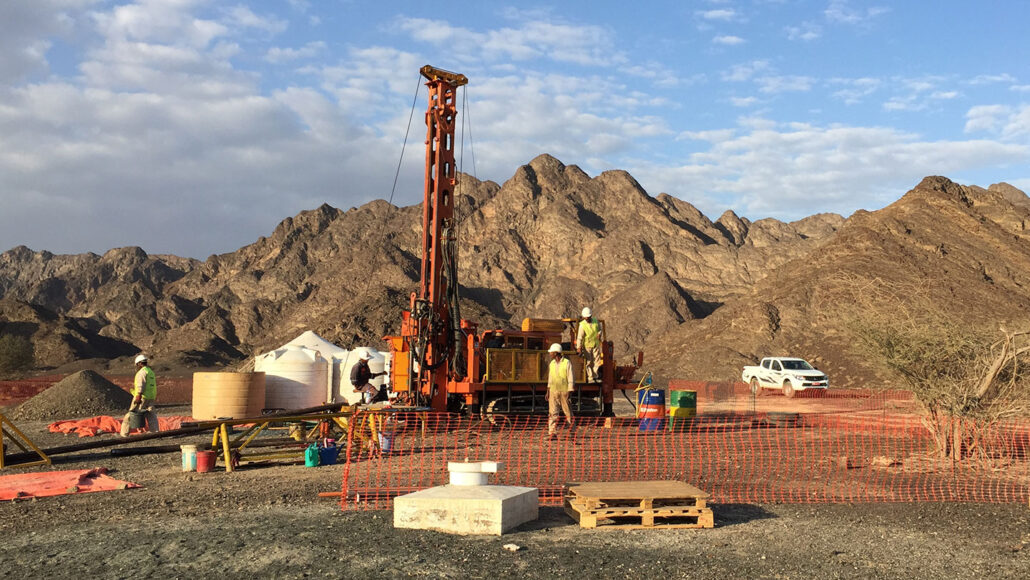Questions for ‘A bold plan to save the planet turns carbon dioxide into stone’

Workers drill into the ground in Wadi Lawayni, a remote valley in Oman. Millions of years ago, unusual rocks were pushed to surface here through a rare geologic upheaval. Now in contact with the air, they are reacting with carbon dioxide, locking the greenhouse gas into solid minerals.
Juerg Matter/Univ. of Southampton